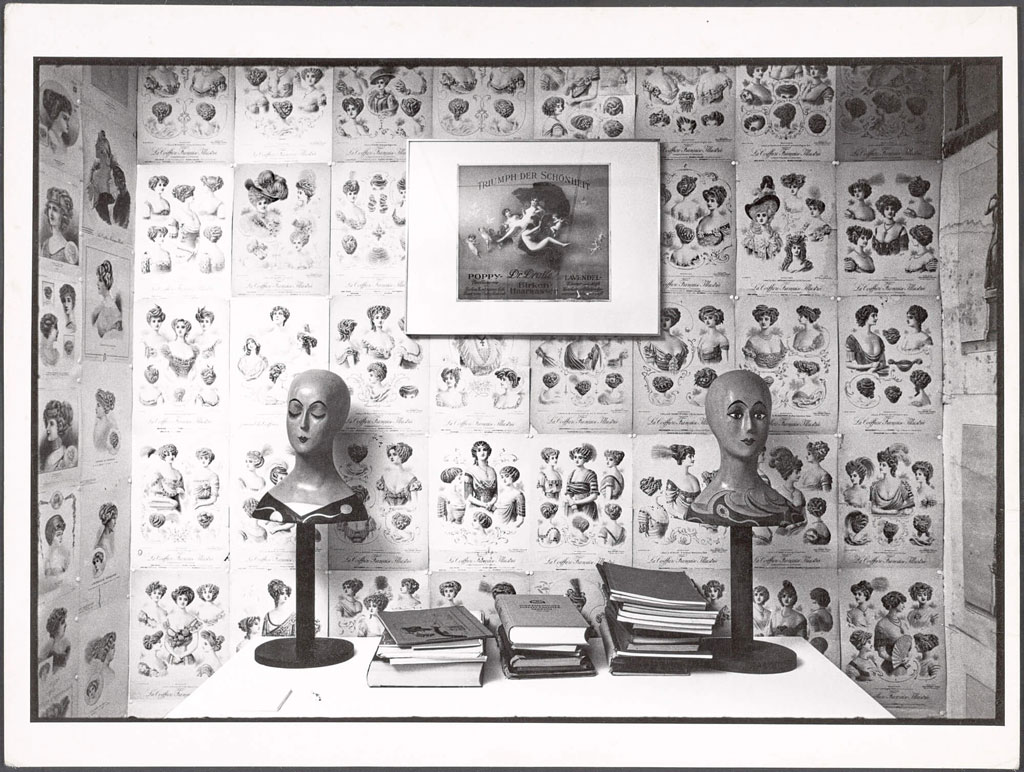ART CITIES:N.York-Harald Szeemann,Grandfather A Pioneer Like Us
 Harald Szeemann (1933-2005) was one of the most influential curators of the recent past, his work was highly complex and cannot be seen as having just a single aspect, as a result an entire generation of curators has been inspired by his independent way of creating exhibitions and his emphatic method of presenting Contemporary Art.
Harald Szeemann (1933-2005) was one of the most influential curators of the recent past, his work was highly complex and cannot be seen as having just a single aspect, as a result an entire generation of curators has been inspired by his independent way of creating exhibitions and his emphatic method of presenting Contemporary Art.
By Dimitris Lempesis
Photo: Swiss Institute Archive
A restaging of the historical exhibition “Grandfather: A Pioneer Like Us” is on presentation at the Swiss Institute of Contemporary Art in New York and includes approximately 1,200 objects from the Getty Research Institute’s Harald Szeemann Archive and Library and Private Collections. In continuation of this legacy, Swiss Institute invited five emerging artists (Xinyi Cheng, Tschabalala Self, Ser Serpas, Real Madrid and Lidija Delic) to make images that accompany the presentation of “Grandfather: A Pioneer Like Us” at Swiss Institute. During his tenure at Kunsthalle Bern, Harald Szeemann produced over 50 exhibitions, each accompanied by a specially-designed poster, a selection of which will be on view in Swiss Institute’s 2nd Floor Gallery. In continuation of this legacy, Swiss Institute invited five emerging artists to make images that will accompany the presentation of “Grandfather: A Pioneer Like Us”. Harald Szeemann began his work as an exhibition curator in 1957 and in 1961, at age 28, was appointed director of the Kunsthalle Bern, becoming one of the youngest museum directors in the world. He transformed the institution into an international showcase, focusing at once on current developments in contemporary art, such as kinetic art, op art, and Happenings, as well as visionary folk artists and popular culture. Szeemann cultivated close collaborations with artists and began traveling the globe in search of new developments in art; in this early phase he developed the exhibition and research methods that would ground all his future endeavors. He organized two major international exhibitions which would cement his reputation as a visionary: “Live in Your Head: When Attitudes Become Form” (1969), followed by the 5th edition of documenta, “Questioning Reality: Pictorial Worlds Today” (1972). With these exhibitions, he moved towards a more experimental approach to curating that, by some accounts, centered the curator as auteur. Szeemann often found himself at odds with artists, trustees, and museum professionals and the intense response to Attitudes led Szeemann to resign from Kunsthalle Bern. Following this period of controversy and the conclusion of documenta 5 in 1972, Szeemann found himself with no commission and no immediate prospects. Undaunted, he began to curate an exhibition in his apartment. “Grandfather: A Pioneer Like Us” in 1974 in his former apartment above the Café du Commerce. It was also the first exhibition by Galerie Toni Gerber. Szeemann dedicated the show to his grandfather, Etienne Szeemann, a famous coiffeur, who was engaged by royal houses and invented a permanent wave device. Harald Szeemann meticulously staged more than 1,200 objects from the estate of the Hungarian migrant. He created the appearance of a reconstructed apartment as the frame to narrate the life story of his ancestor, with whom he felt close on account of the attitude toward life invoked by the title. Szeemann weaved the story of a life into the fascinating arrangement and let the interior installation become a biography. With the exhibition, he invented possibilities of how objects in space can relate a story at multiple levels. For Szeemann, the installation of this exhibition marked an important apprenticeship during which he gained an even greater understanding of the way details can be staged. The exhibition marks a significant moment in Szeemann’s development, as it set in motion a series of projects that challenged what constitutes both exhibitions and institutions, whilst redefining the practice of curating. This full-scale reconstruction is a culmination of three years of research and conservation by the Getty Research Institute, Los Angeles. Szeemann maintained most of the hundreds of elements from the original exhibition, including furniture, and this presentation carefully reproduces it, complete with family photographs, his grandfather’s art collection, household objects, and the fascinating tools of the hairdressing trade.
Info: Swiss Institute (SI), 38 St Marks Pl, New York, Duration: 28/6-18/8/19, Days & Hours: Wed-Fri 14:00-20:00, Sat 12:00-20:00, Sun 12:00-18:00, www.swissinstitute.net



